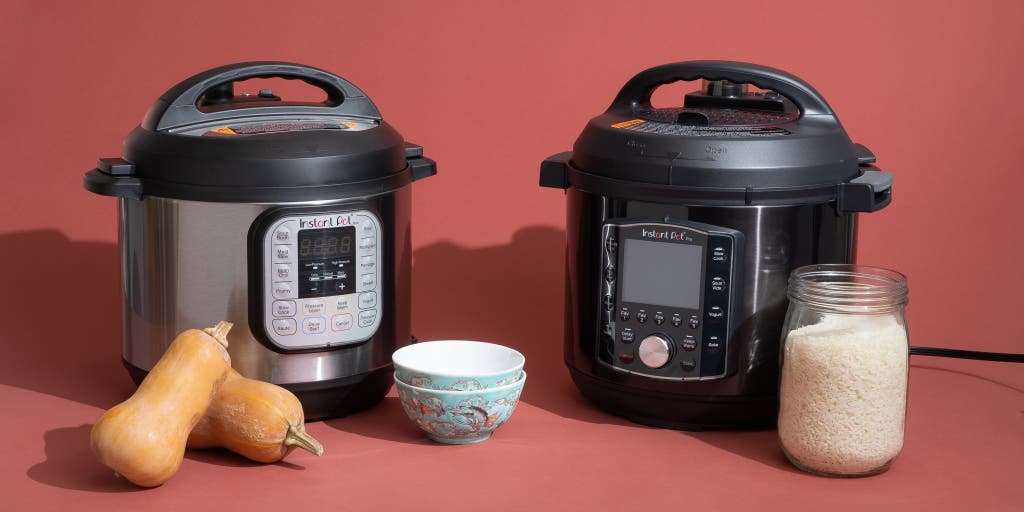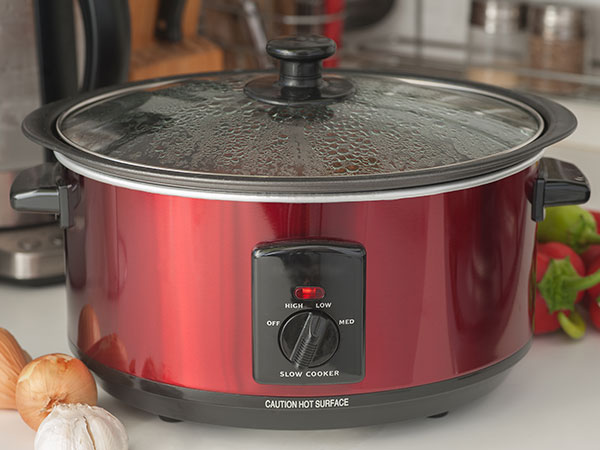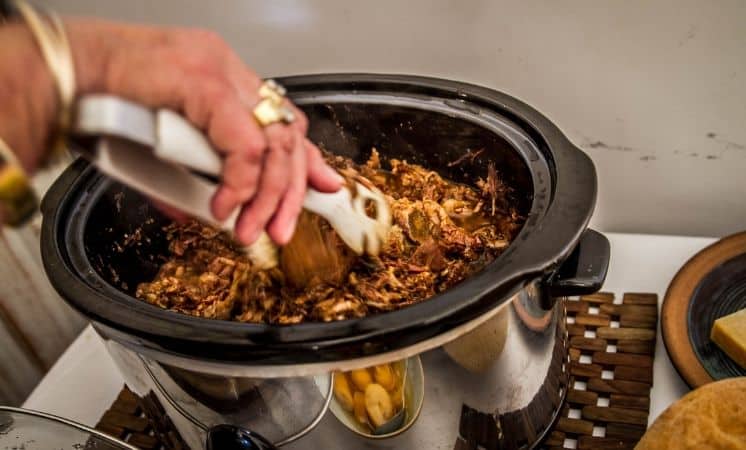Why Does Your Cooker's Outside Get So Hot? (How to Proceed)

This is a post I’ve been meaning to write for a long time. This piece was inspired by an email I got a few weeks ago from a reader. She claimed that the outside of her slow cooker had become much hotter in recent months, and she no longer felt safe leaving it unattended as she had done previously.
I set out to do some research in the hopes of being able to shed some light on the situation.
Should the outside of my slow cooker get hot? Heating components are put around the sides of the slow cooker to assist it spread heat evenly. These components are frequently found sandwiched between the inner and outer casings. The exterior will be harmed when the heating unit reaches high temperatures, which is almost unavoidable. Metal, which conducts heat well, is frequently used for the outer sections.
As a result, it’s not uncommon for a slow cooker to become extremely hot on the outside.
So, should we burn our fingertips every time we touch our slow cooker, and is the increased temperature so dangerous?
Many people say that the exterior of their slow cooker reaches uncomfortable temperatures during cooking. Older models, such as those manufactured in the 1990s, do not get hot on the outside, but many newer types do - the question is whether they are still safe to use.
What temperature should my slow cooker reach?

I contacted the company that made my slow cooker and inquired about it. They recommended that I do the water test to determine the temperature inside my slow cooker during a cooking cycle. I completed the test, which consists of two basic steps:
- Cook on low for 5 hours in the slow cooker.
- Take a temperature reading
Temperatures in the cooker should be around 200 degrees Fahrenheit. That’s exactly what happened.
This may not be true for your slow cooker since I was directed by the manufacturer of the slow cooker I now use.
It appears that it is completely common for a slow cooker to become extremely hot on the outside, so the cooker must be put on a heat-resistant foundation.
What Should I Place Under My Slow Cooker and Where Does My Slow Cooker Be Placed?
Because slow cookers are designed to run for lengthy periods, often without supervision, it’s critical to be mindful of the cooker’s surroundings. You must be careful not just where you position the slow cooker but also what other items you place near it, as they may melt once the slow cooker reaches its maximum temperature.
People have told me that they put their slow cookers on laminate countertops, near plastic bottles, or other heat-sensitive goods. As a result, countertops, bottles, and whatever else have melted and fused to the slow cooker’s exterior.
You must ensure that your cooker is kept in a secure location. To learn about the appliance’s general rules, consult the manufacturer’s manual. When using a slow cooker, I would focus on the following in addition to anything specified in the instruction manual:
- When cooking, make sure there’s enough room between the slow cooker and any neighbouring goods.
- The counter: The slow cooker’s base may become quite hot (this varies from cooker to cooker). Leaving your counter exposed to that level of heat for several hours can cause it to deteriorate. You may avoid this by placing a heatproof tray under your slow cooker.
- The family: Yes, your loved ones are a factor. If you have children, make sure they are either a) aware of the dangers of the slow cooker or b) unable to access it.
- Get a pair of silicone mittens and have them on hand whenever you’re working with your slow cooker. Touching the surface of a hot slow cooker by accident can be highly unpleasant.
A slow cooker can be put on top of a heatproof tray or on:

- Holders for pots
- The stovetop
- Cut-out board made of wood
- Sheet pan for baking
I will use the cooktop to leave your cooker unattended for the full evening. It was designed to endure heat, spilled food, and moisture, making it the ideal location for your slow cooker. And, unlike your counter, the cooker’s heat will not stain or damage it.
Is It True That Slow Cookers Heat The Kitchen?
Have you ever been in a small apartment with few windows and little to no wind, and a hot kitchen on a hot summer day? It isn’t a pleasant experience. However, this isn’t as much of an issue with the slow cooker.
There must be heat involved in any meal, regardless of how it is prepared. This heat will exit the oven, saucepan, slow cooker, air fryer, or whatever it is to some amount. The outside temperature, The size of the room, the appliance, and presumably several other factors all influence how well your kitchen is heated.
So, if the oven heats the house in approximately an hour, won’t the slow cooker (on an 8-12 hour cooking cycle) convert my kitchen into a sauna?
I understand why you might believe that; however, that isn’t the case with most slow cookers. Slow cookers cook at low temperatures for lengthy periods. Therefore the indoor temperature isn’t much influenced. Simply opening a window should be enough to counteract the overall temperature difference.
Is it permissible to use a slow cooker on a granite counter?

Since we put on our granite countertop two years ago, my slow cooker has been used numerous times, and to be honest, there’s no way to tell that I’ve been slow cooking at the same location (I’m not sure how many times.).
The feet of the slow cooker give enough elevation to keep the cooker’s base from making contact with the granite countertop, reducing the amount of heat transfer from the cooker to the Granite.
With stone items and heat, however, there is always a risk. The thermal stress that occurs when natural stone is exposed to heat can cause the stone to shatter. When slow cooking, though, this isn’t as bad as it sounds.
Why?
Thermal shock cracking is more likely to occur when a stone product (counter) comes into direct touch with an item that is already extremely hot – resulting in a significant temperature difference between the item and the stone. However, when cooking in a slow cooker, the temperature shift is moderate. Therefore this is not the case.
The condition of your granite countertop is another factor that might lead it to shatter when subjected to thermal shock. The Granite may not endure the stress created by the initial heat if it is scratched or damaged.
But, if you’re worried about slow cooking on Granite, why take the chance? It’s enough to set your slow cooker on a silicone trivet. Silicone trivets may be found on Amazon for a very low price.
I wanted to know what the rest of the slow-cooking community thought of granite surfaces. The consensus appears to be that slow cooking on Granite is safe and that many have successfully done it without using anything underneath their cooker.
Is it OK for a slow cooker to get hot on the outside?
The answer is simple: yes, many slow cookers become hot on the outside — but not all do. If you use the right tools and take precautions when handling your slow cooker, you should be alright. I hope you found this information useful. Take my heartfelt thanks for taking the time to read this.











